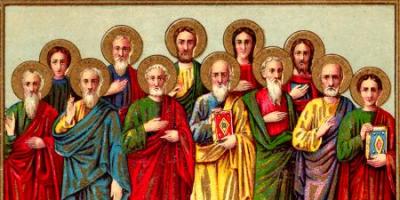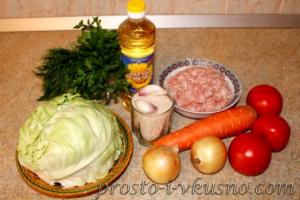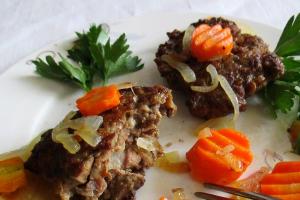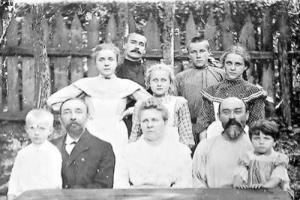There are several important signs by which horses are distinguished. One of them is horse colors. They can be inherited. The color is determined by several features, including the color of the body, the color of the legs, mane, tail and eyes. They have clearly defined boundaries (just like species); there are no transitional forms. For example, a bay colt with a light mane does not exist, and a chestnut horse cannot have black legs.
Piebald horses
The color of a horse develops as it grows. However, closer to old age, the likelihood of changes in this trait increases. There are often situations when a foal is born with an ambiguous combination of shades of different parts of the body. In this case, it is difficult to immediately attribute the animal to a specific color group. There are 4 key colors of horses.
Gray suit is one of the key ones. Many excuses were formed from it. The gray horse may be a Lipizzan breed. The red horse is a representative of the second main group. Animals only come in the appropriate color. A chestnut horse may have darker long hair. The limbs do not differ in color from the body. Black horses are animals of the third main suit. Their body is completely black. Eastern black horses stand out from the rest. Bay color is the fourth main group. Isabella color, brown color and others already belong to the colors.
Voronaya
Black color is characterized by completely black coat color. There is a uniform distribution of color, including on long hair. Black horses can have different hoof colors: charcoal or with pale spots. The described color trait is inherited in 70% of cases. A black stallion that does not have a single brown or red hair on its body is a rare occurrence. A bay or red horse is more uniform in this regard.

Black horses have a uniform black color
A black horse that does not shed in the sun exists. It is not affected by weather or light. These animals will not be called “black and tan.” Foals that are resistant to these phenomena are born with a smoky or bluish tint. A black horse will shed only under unfavorable weather conditions: bright sun and other phenomena. You can recognize such an animal at birth. These black horses are born ashy or black and bay, sometimes brown. The molting process has individual variations, but the black color loses its durability.
It is not for nothing that black horses “in a tan” are allocated to a separate group. They are notable for the fact that when exposed to sunlight, the ends of the hair turn red. This phenomenon is explained by the fact that some black horses have an extremely unstable black tint. In summer, the color of the animal’s body turns brown. Only the tail, mane and limbs remain pure black. With the onset of winter, black horses regain their native color.
These animals have always been respected. High-ranking and strict persons had black horses. Their occurrence is not the highest. Black horses can be of the Friesian breed.
Redhead
The red horse was named so due to the corresponding body color and long hair. The intensity of the shade may vary. Usually, if the horse is red, then the color of the mane and tail will match the shade of the body. However, brightness may vary. Occasionally, the following case occurs: the horse is red, and the mane and tail are brown.

Tan horses, unlike bay horses, cannot have black legs
These horses have a noticeable difference from the bay. The red horse has brown limbs. There are also dark brown representatives. If the horses are red, then there is an admixture of black hairs in the coat. However, the mane and tail have dark brown inclusions. Black and brown horses are so similar that they can be confused because the shade is too dark. However, it is known that the origins of these two suits are different. Light brown horses have a light brown body shade.
Solovaya
If the horse is red, this does not guarantee that it belongs to the corresponding suit. It's worth looking at the color of long hair. Nightingale color is distinguished by its white tint. There are other similarities:
- game and dark salt;
- isabella color and light salt.
The nightingale color is characterized by the light and white color of the foals. Their skin turns from pink to dark. The nightingale horse has brown eyes. However, there are representatives in which they are amber or light brown in color. The salty horse became this way under the influence of just one cream gene. The red horse changes color under its influence. The animal receives the typical snow-white mane and tail, as well as a slight sheen of the remaining body hair. Based on the indicated signs, you can determine whether the horse is a nighting or a game horse.

The nightingale horse has a light tail and mane
Gray
The gray color is formed as a result of the simultaneous presence of white and black hairs on the horse’s body. With age, their color undergoes serious changes - gray hair appears. A gray horse produces foals of various shades, but after some time they acquire the color typical of the color. The shade varies from almost white to dark gray. The gray color has another distinctive feature - dark skin.
Upon reaching 9 years of age, animals become noticeably grey. If the gray horse was light, it becomes almost snow-white.
Some individuals have dark spots covering their body. The gray color in this case is called “dappled.” In older animals, the body may be covered with “buckwheat” - small black dots. A gray horse changes its hair color over the years, but its skin remains dark. Only age-related pigmentation is observed. Gray color has another characteristic feature - susceptibility to certain types of feed (buckwheat straw causes allergies in the form of a rash).

A gray horse may turn white with age
Savrasaya
Savrasaya color looks like this: fairly light hair on the body. Many have a pronounced belt on the back and noticeable zebroid legs. The Savras horse has the tail, mane and head color typical of the main color. This phenomenon became possible due to the action of the “wild color” gene, which dominates and makes the coat lighter. Savrasaya is otherwise called “wild color”.
The described change in appearance leads to better camouflage in natural conditions. Savrasost always accompanies a number of “primitive marks”:
- Belt on the back. Represents dark stripes.
- Zebroid limbs - horizontal stripes on the legs. This sign may not always be noticeable or may be completely absent.
- “Wings” - a strip in the area of the withers or shoulders, running across the body.
- “Cobweb” is a dark-colored mesh on the forehead.
- The presence of white strands in the mane and tail.

Savras suit has many distinctive features
Isabella
The Isabella horse color received such an interesting name thanks to the Queen of Spain. Horses of the Akhal-Teke breed, Kinski and others have this coloring. The Isabella horse appeared in Turkmenistan many thousands of years ago. The animals are purebred, which not all breeds can boast of.
The Akhal-Teke horse of Isabella color tolerates the summer heat well.
If you look more closely, the effect of iridescent colors of various shades becomes noticeable. With age, the color intensity intensifies. Isabella suit is combined with pink skin and blue or gray eyes. Proper care of the animal will guarantee beautiful fur. Isabella color is inherited, but albinos are not uncommon in the offspring.

Isabella suit is very beautiful
Other suits
The number of suits is large, so here is a brief description of some of them:
- The bay color is characterized by a brown body and black tail, mane and legs. Such horses have an admixture of black hairs on the body. The coat color can be anything from light to dark brown.
- The mouse color is distinguished by the presence of black, gray and brown hair on the body. The tail, mane, legs and head are black. A mousey horse sometimes has zebroidity.
- Damn color of horses. It is characterized by a sandy-golden coat, black tail, mane and ends of the legs.
- Piebald color of horses. You can recognize it by its white spots of different configurations. This is partial albinism. There is no name for a specific breed that has a specific color.
- Igrenevaya. Has red or brown fur. The game horse has white or grayish long hair. The red horse has similar characteristics, only the color of its long hair can change. The game color is characteristic of the Haflinger breed.
- Kauraya. Close to natural color. The brown horse has a special gene that determines its color. The main shade is red. The brown suit has light hair only on some parts of the body. The tail, mane and limbs are darker. The brown mare may have wild markings. This color is very rare; not all breeds have it.
Horse breeds and breeds have a large number of combinations. There are also quite rare colors of horses (for example, kauraya). The information provided will help you understand the differences between them.
Quite a long time ago, people who breed horses noticed the fact that some breeds are too similar to each other, but this does not make them the same.
Thus, it is possible to distinguish in one group the isabella, brown, golden and salt color of the horse. Naturally, each suit is a masterpiece, but they are very similar in color, however, each of them has its own characteristic features.
The salt color of a horse is characterized by a uniform sand color throughout almost the entire horse. As for the mane and tail of malt dogs, the hair can be much lighter than the shade of the body. There are horses whose mane is white with a slight admixture of dark hair.
Horses of this breed are born quite light, most often white. Over time, the foals darken and their body color becomes a standard sand color.
In addition to the color of the body and mane, a characteristic feature of malt horses are brown eyes. Occasionally they may be amber or have a light tint.
Photo of a stallion of nightingale color
To produce a stallion, a horse of the same color requires one cream gene, which determines its special genotype, based on the genes of the cream and the red horse. It is the cream gene that is responsible for the white mane and tail. But the main red color gives a not very strong tint of red color to the entire body of the horse. This coloring is unique and quite colorful.
The horse's salt suit is so diverse that, in addition to the classic salt suit, there are other interpretations of this suit, namely:
 Nightingale in apples
Nightingale in apples - The rich sand color, which is distributed throughout the body, has a darker shade on the legs. These features characterize the dark-salt casting of the salt color.
- Light salt color is characterized by a fairly light sandy shade, almost milky. In this case, the tail, mane and legs of the horse are white. Very often in this suit you can find individuals with blue eyes. Light-coloreds are very often confused with representatives of horses.
 Light salt dressing
Light salt dressing 
About the mysterious nightingale palominos
Palamino - this is what the inhabitants of Europe called the salting horses. There are different versions about where this word came from. One of the options is that Don Juan de Palamino was presented with a noble horse, which had a salty hue. According to another version, the exquisite palomo grape variety gave rise to the concept of nightingale. Translated from Spanish, this variety is called “dove”.
 Palomino
Palomino In America, the salt color of horses was the ancestor of the breed, similar to the palamino horse; at that time, the salt color was a priority in selection. They were brought to the continent by the Spaniards for breeding. In various breeds, the so-called “Palamino” color can be manifested. That is why “palamino” is more the name of the color, and not the type of horse itself. Some experts in the field of horse breeding believe that the origin of this color was mixed with the blood of Arabian horses.
The mystery of this species is the fact that there is no exact way to calculate in advance what color the foal will be from the palamino parents. In approximately 50% of cases, palamino cubs are born, and in the rest, both Isabella and red foals can appear.
In the 15th century, in the court of Queen Isabella, the most popular and beloved horses were a special color, which were called Isabella, in honor of the queen. Nightingale horses occupied a worthy place in the stables of the King of Yemen.
Graceful Akhal-Teke horses often have shades of salt color. Thanks to the light tone of the coat, all the muscles on the body of this exquisite type of horse are emphasized very favorably.
A horse's color is a combination of such characteristics as: the color scheme of the body, mane, tail, eyes, the presence and location of pigment spots. The nightingale color looks advantageous on almost all breeds.
The contrast between the cream color and the almost white mane and tail creates a surprisingly beautiful composition. Nightingale horse color flaunts golden, sandy, cream or light honey tints in the sunlight. This color is most often found in the breed and palomino.
Quite often, the nightingale color is mistakenly called “palomino”. This is explained by the fact that palomino is unique to this color, which is why people get confused. Nightingale is a color, and Palomino is a breed group of this color.
The “nightingale gene” or “cream gene” is responsible for the presence of such a golden color. Foals from birth have the color characteristic of this color. They do not lighten as they grow older.

The skin of these “crumbs” is pink and can darken over time, acquiring a more saturated shade. But the wool’s original color remains unchanged.
Photo of a nightingale horse always look impressive and memorable. The white cream gene only colors the mane and tail white. There may be dark hair, but this figure should not exceed 15% of the total mass of the mane and tail. The eyes of golden horses are light brown, rarely a light amber hue.
Crossbreeding nighting horses gives a high probability of getting cubs of Isabella and red color. So, it is practically impossible to plan the appearance of a foal of this color.

The probability of obtaining offspring of a nightingale color is 50%. The remaining 50% was divided between light redheads and pseudo-albinos. This is explained by the fact that only one gene is responsible for the color of an animal in this way. Therefore, salt horses are considered rare and are a decoration for any stable.
Types of nighting horses
Nightingale horse, what is it like? color scheme, many ask. Animals of this color have different colors, depending on the shade of their coat. Here description of the nighting horse according to their type:
- Dark basic - horses have dark sandy skin and dark hooves. There are individuals with a reddish tint;
- Light basic is a very light shade, one might say milk horses with a snow-white mane. Their hooves are brown and their skin is grey;
- Golden-basic - the rich sand color of the coat plays gold in the sun. The tail and mane are also golden;
- A rare species in apples. Red spots are scattered throughout the animal's body. The saturation and intensity of the color of these apples depends on the conditions of detention.

Care and maintenance of the nighting horse
The floor in the stable should be covered with dry and fresh bedding. In winter, the room temperature should not be lower than +4 degrees. Permissible air humidity is no more than 85%. It is advisable that the floor be adobe rather than wood.
In the morning light yellow horse needs to be brushed to preserve the natural shine of her coat. In the warm season, do not forget to pamper your animal with water treatments. Make sure the water temperature is at least 18 degrees. If the horse is lathered, then you should wait until it rests and returns to normal, only then can it be cleaned and bathed.
Reforging is carried out on average once every 1.5 months. You should clean your hooves of dirt daily. If you work mainly on hard surfaces, then forge 4 legs. If the animal is transferred to pasture, then there is no need for horseshoes.

Nutrition of salting horses
The daily food consumption rate for a nighting horse is 5 kg of oats, 12 kg of hay, 1.2 kg of bran, 2 kg of carrots. You can add beets, apples and even watermelons to your diet. Special vitamins and mineral supplements will have a beneficial effect on the general condition of the animal. Provide free access to table salt. It is convenient to use briquette-lizun for this purpose.
Oats are given 3 times a day, and hay 4-5 times. Roughage such as hay and straw should make up 40% of the daily menu. Choose meadow and legume-cereal hay.
Make sure that it is of high quality, that is, not frozen, rotten or wet. Before feeding, the nighting horse needs to be given water. The daily water consumption rate for an adult horse is 60-80 liters (6-8 buckets).

With the arrival of spring comes the period of grazing, which means that freshly cut grass will be added to the daily diet. But after the “winter stagnation”, such grazing must be introduced gradually so as not to cause damage to the animal’s digestive system.
At first, don't let your horse graze for too long. Before taking her out to pasture, it is advisable to give her a few kilograms of hay. Avoid grazing areas where alfalfa or damp clover grows.
Price of salting horses and reviews of owners
Feature of the nighting horse in its uniqueness and beauty. Such horses are extremely rare. Previously, only rich people could afford such an exclusive horse. The owners of this were the King of Yemen and the Spanish Queen Isabella. Thanks to this queen, the nighting suit gained popularity in the 15th century.

The cost of a nightingale is influenced by many conditions: breed, training, pedigree, age and even the owner himself. Therefore, there is no fixed price for this particular suit.
But since this color is in short supply, an animal of this color will cost more than its fellow tribesmen. The rare color of horses will always raise the price. There are approximate figures: the nightingale will cost 160-180 thousand rubles; thoroughbred stallions - 250-360 thousand rubles, and crossbreds from 150 thousand rubles.
Nightingale color - the body, head and limbs have a uniform sand color of various shades. The mane and tail are the same color or lighter, up to white; there may be a slight (less than 15%) admixture of dark hair.
Saltwater horses are often born very light, almost white. These foals have pink skin that darkens over time. The eyes are usually brown, like most horses, and only occasionally they can be light brown, amber.
The nightingale color is created by one (!) gene for a cream based on the red color. Thus, the nighting horse has the genotype eeCrcr.
The cream gene in the heterozygous state lightens the mane and tail to white and often gives a soft tint of red hair on the body; this is the main difference between the nighting color and the game color (not always noticeable, however).
The nighting color is characteristic of the Akhal-Teke breed, Kinski horses and palominos.

Additionally, the following variations are distinguished:
dark salt– rich sandy color of the body, head and limbs with a reddish-yellow tint, while the hooves are dark in color (if there are no white markings on the legs). The mane and tail are the same color as the body, or lighter.
light salt– Light yellow or milky sand color. The mane and tail are almost always closer to white. The hooves are dark in color, but not black. With this suit, blue eyes are often found. It differs from the cream one in its darker color and gray skin color.

golden-salt– Rich sandy shade with a golden tint to the wool. The tail and mane are usually the same color or slightly lighter. The hooves are light. The suit is extremely rare. Having seen this photograph, the famous Bartabas decided to make a film in the “search for the Golden Horse.” Having traveled to many countries and looked at thousands of horses, he never found the one he was looking for. In the photo is the Akhal-Teke Kambar, born at the Komsomol stud farm (Turkmenistan).

nightingale in apples- a fairly rare color. Small (2 to 4 cm in diameter) reddish spots are scattered throughout the body. With good care they can become darker and brighter.

Horses of light colors have attracted attention since ancient times, and the nighting color amazed with its showiness. Horses with a delicate sandy body shade combined with a lighter tail and mane remain in the memory for a long time after the first meeting with them. It is not for nothing that they have belonged to very wealthy people since ancient times: then animals of this color were rare. And even now they are not very common in the equestrian world. Owners of modern stables dream of acquiring horses of this color.
The color is light in color with a delicate sandy body shade combined with a lighter tail and mane.
The salt horse gained its popularity due to its uniform sandy color. It can have many options, ranging from light sand to golden tones. There is also an admixture of very dark hair. But it will not be even 15%.
Only one gene is responsible for the salt color of a horse. The main sign of its presence is considered to be red shades. Therefore, the genotype of the nighting animal looks like this: eeCrcr.
The nightingale suit is often confused with the game suit. In the latter, the “cream gene” removes the bright red color, giving the body coat a soft tint, and is able to color the mane and tail almost white.
Foals of this color do not lighten as they grow. They are immediately born fair. There are also white babies with pink skin. It changes its color to gray over time.
Nightingale horses often have amber or brown eyes. In this case, the iris of the eye is almost always brown.
Existing layouts

A representative of one of the rare variants of the dressing is the nightingale in apples.
Nature has endowed many animals of the same group with different shades, according to which they are divided into subgroups. Nightingale horses also have variations of coloring (shades of wool).
- Light salt – the body of the animal is milky-sandy or resembles baked milk in color. The hooves are colored light brown. And the mane and tail are white. This shade is often confused with Isabella color. They are distinguished by skin color. In Isabella it is pink, and in Nightingale it is gray.
- Dark salt - more like dark sand or even bright beige. The hooves are dark, but if there are small islands of white at the very bottom of the leg, then the hooves may be light. The hair on the tail and mane is slightly lighter than the body.
- Golden-salt– horses with a golden tone always look elegant. Usually, if the body is rich sandy, then the hooves are light. The tail and mane are often lighter or the same shade as the body. Horses with these colors are extremely rare.
- Solovy in apples– such a manifestation of the nightingale color can also be rarely observed. On a uniform light background, small spots are located evenly throughout the body. They are several shades redder than the body itself. The color of the spots depends on the diet and living conditions of the animal.
What breeds are characterized by this color?
The salt horse can be of three breeds:
- palomino;
- kinski;
- Akhal-Teke.
Palomino
They belong to the group of riding horses. They usually have a soft golden coat with a creamy tint. That’s why they got their name, according to one of the many versions. "Palomino" is a grape variety that has the same shade.

The Palomino breed can be classified as a color type, since palomino horses only produce palomino foals 50% of the time.
The name "palomino" rather refers to the type of suit. Palomino horses cannot be expected to produce foals of the same color. Only in 50% of cases are palomino babies born. The remaining 50% are red or isabella cubs.
Kinski
This is the pride of Czech horse breeding. Beautiful athletic horses with a graceful body that extends into a long, straight neck. They are always playful, agile, very jumping. Kinski horses are noticeably different from other breeds with their beautiful movements, calm nature and golden coat color. Therefore, they are highly valued both in sports and in amateur riding.
Akhal-Teke
Representatives of this breed are quite exotic. Their main feature is considered to be a medium-sized head, on which large eyes and pointed ears are clearly visible. A tall horse with high withers, a fairly dry and lean torso is simply unforgettable if it also has a nighting color. It is worth noting that this is one of the most beautiful breeds of riding horses in Asia.
Regardless of what type the horse is, if it has a nighty color, it will always attract attention. Akhal-Teke horses differ from others by their blue, slightly slanted eyes. Warm golden tints of wool combined with delicate sand undertones and truly mesmerizing tints are spectacular and unforgettable.
You can purchase an Akhal-Teke horse only at special exhibitions or auctions. They are purposefully bred for sport and private stables.
Since the animal’s color is influenced by only one gene – the “cream gene” – we can say that the birth of such a horse is a lottery. Which every horse breeder would like to win.








